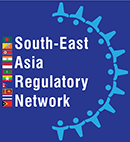Action Point 13 - Review of the gaps in medical device regulation
Last update: 27/07/2023
Background
During the meeting of Working Group 5 (WG5) Medical Devices in January 2022, the Member States highlighted the need to Facilitate the assessment of gaps in medical devices regulation in the Member States.
The use of the WHO global benchmarking tool (GBT) is the primary means by which WHO assesses regulatory systems for the regulation of medical products. The tool and benchmarking methodology enable WHO and regulatory authorities to identify areas of strength as well as areas for improvement; facilitate the formulation of an institutional development plan (IDP) to build upon strengths and address identified gaps; to aid in the prioritization of investments in IDP implementation; and to help monitor progress. The WHO Global Benchmarking Tool Plus Medical Devices (GBT+MD) Revision VI+MD version 1, published in April 2022, is the latest release of the GBT for benchmarking of medical devices national regulatory systems (1).
Further, the WHO has developed the Global Model Regulatory Framework (GMRF) for Medical Devices including in vitro diagnostic medical devices (IVDs) to provide guidance and support to WHO Member States that have yet to develop and implement regulatory controls relating to medical devices, as well as to jurisdictions that are continuing to improve their regulatory frameworks as they take steps to ensure the quality and safety of medical devices available in their countries (2). This framework is further complemented by the Guidance for post-market surveillance and market surveillance of medical devices, including in vitro diagnostics (3).
During the meeting on 14 November 2022, WG5 members were informed about how based on the GMRF a survey was developed to assess the gaps in medical devices regulation in Africa, the main limitations and conclusions of this experience, and discussed how a similar survey may benefit SEARN members. It was suggested that as a first step towards assessing regulatory systems for medical devices, further considering this survey may be helpful to address WG5-led action point 13 of the SEARN Work Plan 2022-2023, adopted by the Assembly on 8 June 2022, to ‘Identify or develop a tool to review gaps in medical device regulation’.
Objectives
General objective
To identify the gaps in medical devices regulation in the region.
Specific Objectives
- To identify a tool to review gaps in medical device regulation
- To adapt the tool to the context of the region
- To conduct the survey, analyze and communicate the main results.
Survey on Gaps in Medical Devices Regulation in SEARN members
Legal requirements
The responding countries mostly felt in two main groups: those where legal provisions are already in place (n=5), and those were no legal provisions have yet been developed (n=2). In all Members where legal provisions have been developed, a regulatory authority was defined for medical devices.
While individual situations varied, the main gaps in legal provisions were related to market surveillance and the definition of borderline products.
Medical devices definitions varied: two countries used the definition from the International Medical Device Regulators Forum (IMDRF), one a specific definition, and two referred to the ASEAN Medical device directive.
In all countries with legal provisions in place, medical devices have been classified according to the risk although the risk classification varied (WHO, Global Harmonization Task Force (GHTF), ASEAN).
There were significant variations in the requirements for marketing authorization applications, although some elements were widely shared, such as device details, Essential principles checklist for safety and performance of medical devices and IVDs, Declaration of conformity, labelling, or design and manufacturing information. QMS certificate, free sales certificate and CE certificate were also common requirements.
Placing on the market
All members with legal provisions in place require registration of the manufacturer, importer or representative/distributor, and a majority perform import controls.
The requirements related to the Quality Management System included ISO 9001 and ISO 13485 in most of the countries, with additional specifications in some cases. The compliance with standards was mostly checked based on certificates issues by other organizations. Audits were only reported by one Member.
Market surveillance
A market surveillance and a vigilance system were in place in 4 of the Member States. Users report to Manufacturers in 3 countries, other economic operators in 4 countries, and the NRA in 3 countries.
The responsibilities of the manufacturers and other economic operators in terms of collection of user/patients feedback and reporting were quite similar between the countries. However, the responsibilities of the NRA varied significantly, especially with respect to collecting user/patients feedback, sharing this feedback with the manufacturers, or reviewing the manufacturer investigation reports.
Generally no system was in place to provide extra incentive to report feedback related to assistive products.
Gaps
When requested about the needs to strengthen medical devices regulations, the most common responses were related to training and reliance.
Next steps
Based on the results from the survey, the following needs were identified:
- Capacity building for medical devices
- Reliance for medical devices
References
- WHO. WHO Global Benchmarking Tool + Medical Devices (GBT + medical devices) for evaluation of national regulatory systems of medical devices including in-vitro diagnostics [Internet]. [cited 2022 Dec 8]. Available from: https://www.who.int/tools/global-benchmarking-tools
- World Health Organization. WHO global model regulatory framework for medical devices including in vitro diagnostic medical devices [Internet]. Geneva: World Health Organization; 2017 [cited 2022 Dec 16]. (WHO Medical device technical series). Available from: https://apps.who.int/iris/handle/10665/255177
- WHO. Guidance for post-market surveillance and market surveillance of medical devices, including in vitro diagnostics. [Internet]. 2020. Available from: https://www.who.int/publications/i/item/9789240015319
